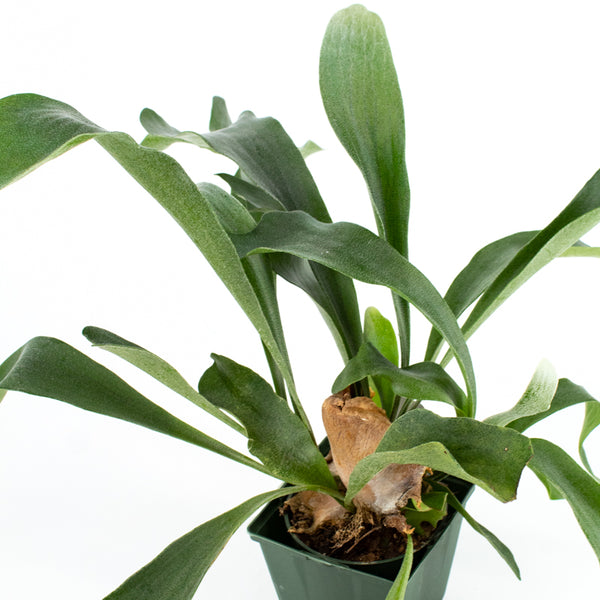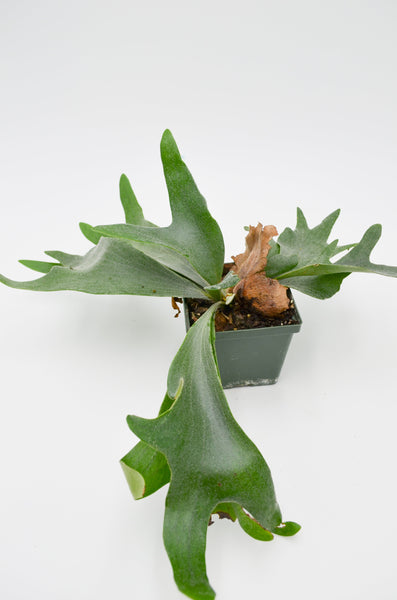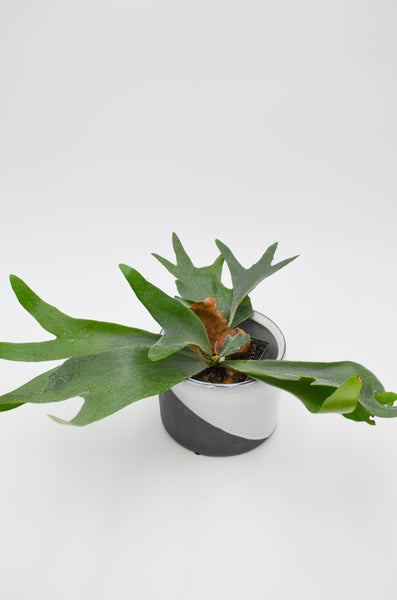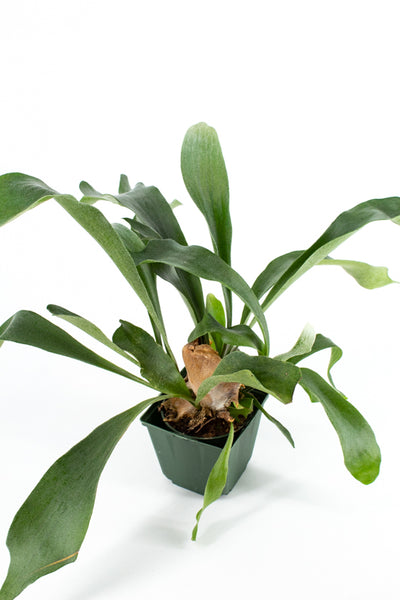Staghorn Fern (Platycerium)
Staghorn ferns (Platycerium spp.) are unique, epiphytic plants known for their large, antler-like fronds that give them their distinctive appearance. They can be grown mounted on wood or bark or in a hanging basket. Follow these care instructions to keep your staghorn fern healthy and thriving:
-
Light: Place your staghorn fern in a location with bright, indirect light. Avoid direct sunlight, as it can scorch the leaves and cause them to turn yellow.
-
Water: Water your staghorn fern by thoroughly soaking the mounting material or potting mix, allowing the excess water to drain completely. Allow the mounting material or potting mix to dry out slightly between waterings. Be cautious not to overwater, as this can lead to root rot.
-
Humidity: Staghorn ferns prefer high humidity levels. To increase humidity, you can place a tray filled with water and pebbles underneath the pot, mist the leaves and mounting material regularly, or use a humidifier.
-
Temperature: Maintain a temperature range of 60-80°F (15-27°C) for optimal growth. Staghorn ferns can tolerate a range of temperatures but avoid exposing them to temperatures below 50°F (10°C) or sudden temperature changes.
-
Fertilizer: Feed your staghorn fern with a balanced liquid fertilizer or a fertilizer specifically designed for air plants (tillandsias) every 4-6 weeks during the growing season (spring and summer). Use a half-strength solution to avoid over-fertilizing. Reduce feeding to once every 2-3 months during fall and winter.
-
Repotting/Mounting: If your staghorn fern is growing in a pot, repot it every 2-3 years or when the roots outgrow the pot. If it is mounted, you can either remount it on a larger piece of wood or bark as needed or divide it into smaller plants and mount them separately.
-
Pest control: Keep an eye out for common pests such as mealybugs, scale insects, and spider mites. Treat any infestations with insecticidal soap or neem oil, following the manufacturer's instructions.
Pet-friendly or toxic to pets?
According to the ASPCA, staghorn ferns (Platycerium spp.) are non-toxic to cats and dogs. They are considered pet-friendly plants, making them a great addition to households with pets. However, it's always a good idea to discourage pets from chewing on plants to avoid potential choking hazards or digestive issues. If you have concerns about your pet's health, contact your veterinarian.








